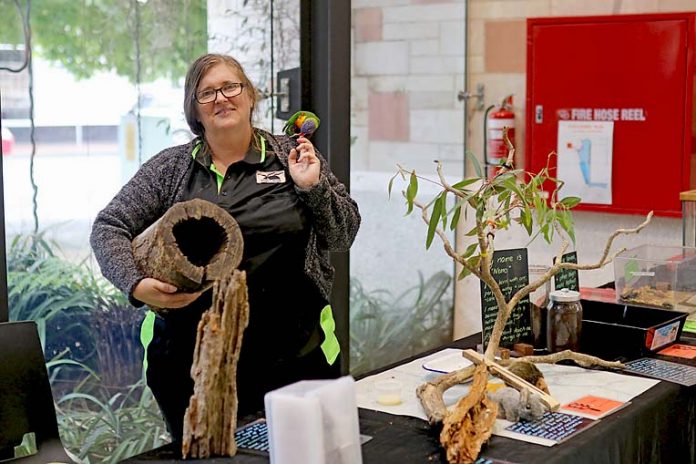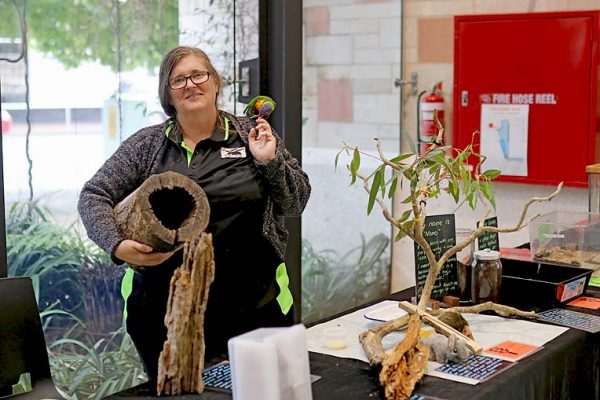

A BIODIVERSITY specialist has praised the region for its regulations on fallen wood and hollow logs, saying both provide vital shelter for mammals, reptiles and marine life.
Bugs n Slugs director Kris Messenger presented a workshop at last week’s Science Alive event about the importance of hollow logs and how one may be formed.
The invertebrate and nature education specialist said the Limestone Coast was one of a small number of regions with regulations on fallen dead wood and hollows.
“Some people say we need to increase the amount of dead wood we have in our natural reserves by anything up to 200pc to take care of biodiversity in the future,” Ms Messenger said.
“The South East is already doing that and it has been for quite some time now.
“I wish other regional and metropolitan areas were doing the same.”
Ms Messenger said a hollow log can take anywhere from 80 to 100 years to form.
“There is a story behind a hollow log and it does not just happen straight away … 80 to 100 years is a really long time when you compare to how long it takes to cut one down or take one,” she said.
“We need around 30 useful hollows per hectare for there to be great biodiversity.”
Ms Messenger said the biodiversity chain could start with an insect such as the ghost moth, which was common in the region.
“The adult lifespan of a moth is very short, but the larva bores into a young sapling to begin with,” she said.
“It does not kill it but it completes its life cycle in the tree, but then leaves and only lives for a week.
“It takes the right conditions for these insects to emerge, maintain, mate, lay their eggs and then off they go.”
Ms Messenger said the insects left behind a small hollow which provided a space for its next inhabitants to move in.
“These insects then renovate it because it may not be the right hollow for them,” she said.
“Lots of things help with that process including fungus which everyone in the South East would have seen.
“The fungus creates white rotten wood which can be found everywhere.”
Ms Messenger said termites were the next to move into the wood.
“The South East would be familiar with termites, but they are not the enemy that everybody thinks they are,” she said.
“They feed lots on things like centipedes for example, which is why you find centipedes in dead wood.
“The termites renovate the hollow, make it bigger and regurgitate into their mess which looks a bit like paper mache.”
Ms Messenger said beetle larva contributed to creating a hollow.
“Most people do not know the difference between a curl grub which can be found on lawn, or a native hollow-making beetle,” she said.
“People make a very quick decision when it comes to beetle larva and immediately want to ‘nuke it’ or get rid of it.
“It is actually a very important pollinator when it is an adult.”
Ms Messenger said hollows were an integral part of the environment because around 40pc of mammals and 22pc of birds and reptiles used it as a home.
“Most of our threatened species use hollows and there is a relationship between our threatened species and our lack of dead wood,” she said.
“There are signs up and some people may think why and that it would have no impact if they took it.
“It is not just the wood which has fallen on land, it also includes the logs in water as there is a whole heap of fish and aquatic wildlife which use it.
“I think the South East’s regulations have helped maintain their great level of biodiversity.”
For more information contact Kris via email on kris@bugsnslugs.com.au or visit the Bugs and Slugs website.





